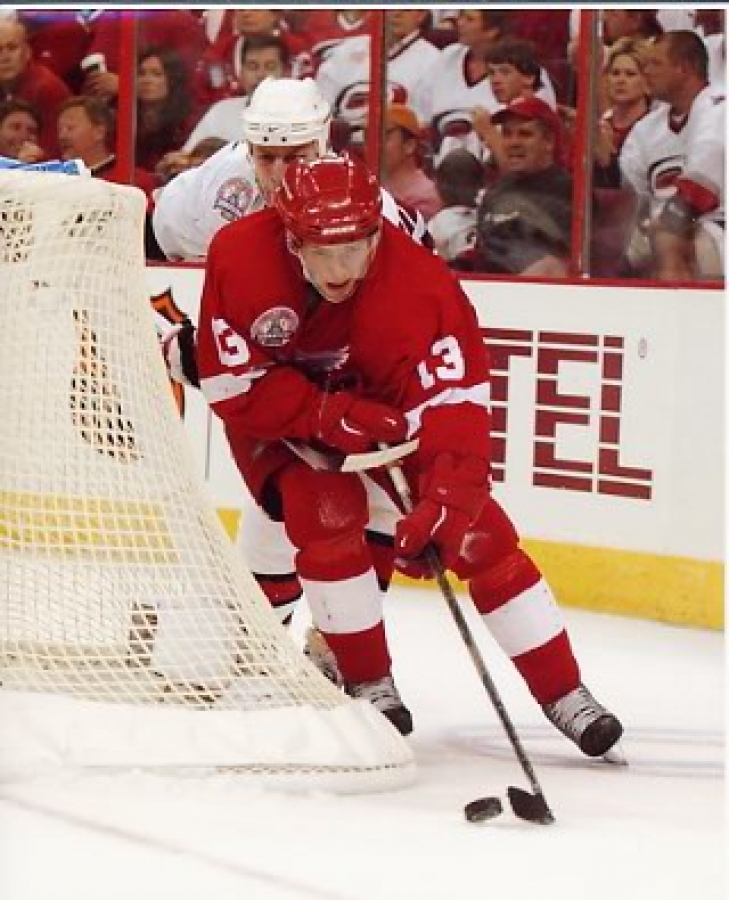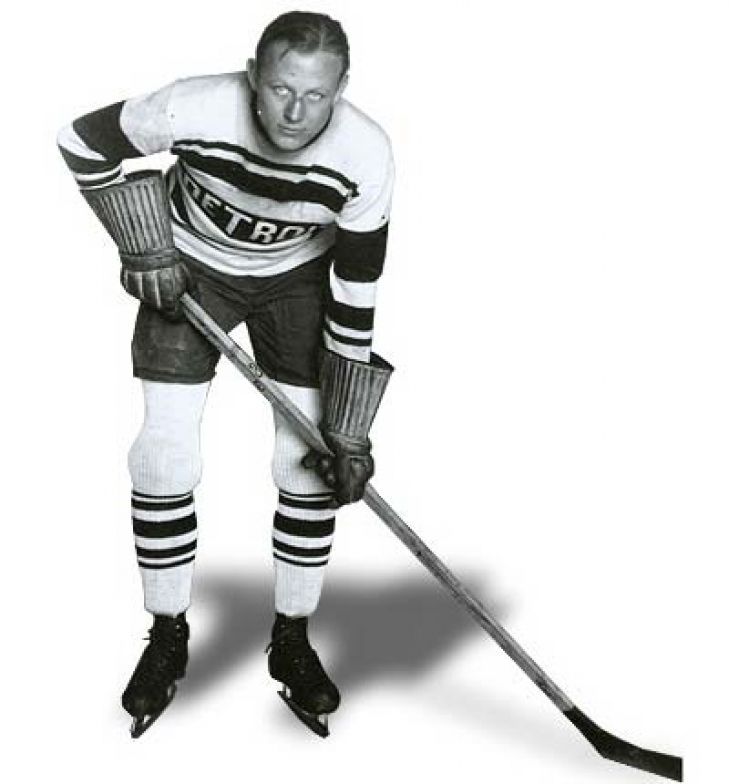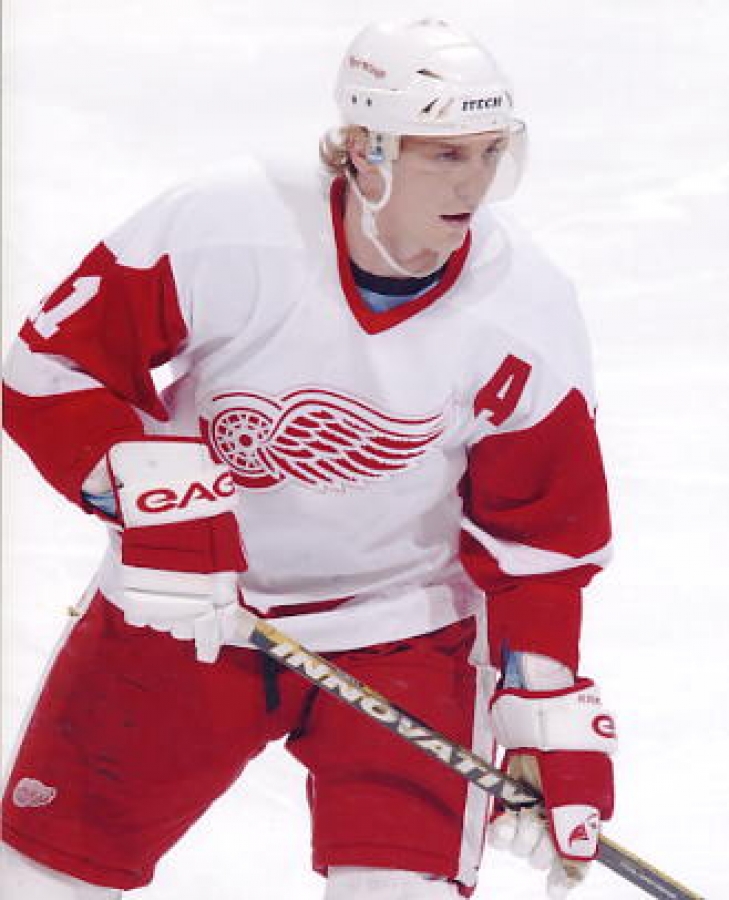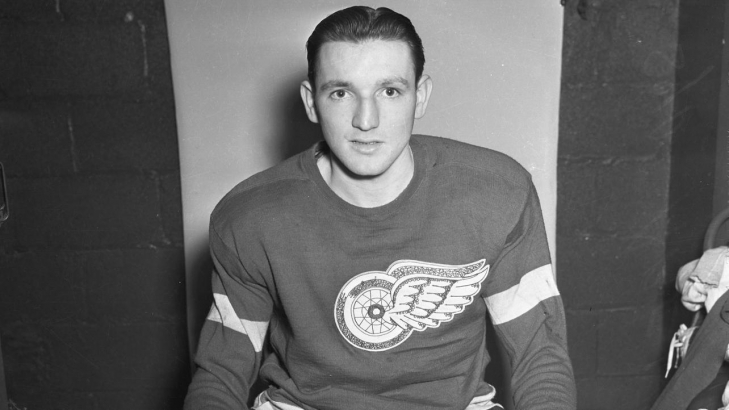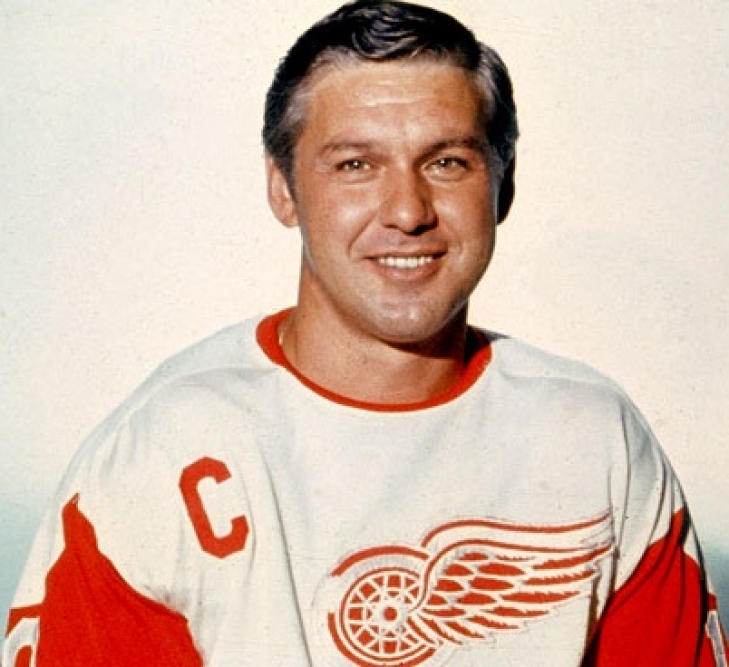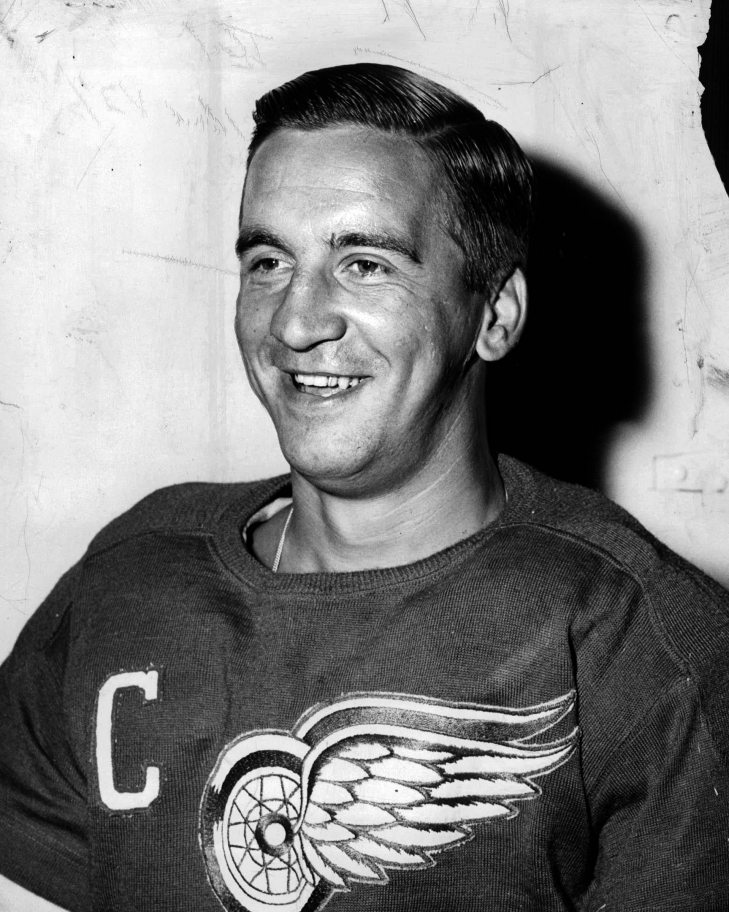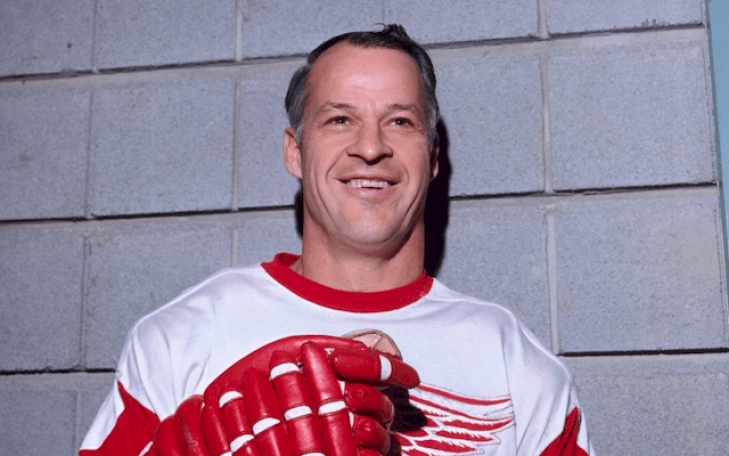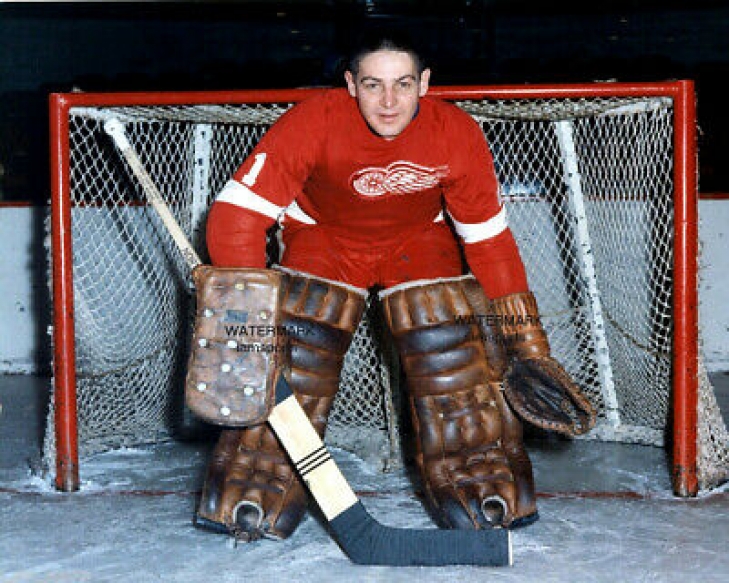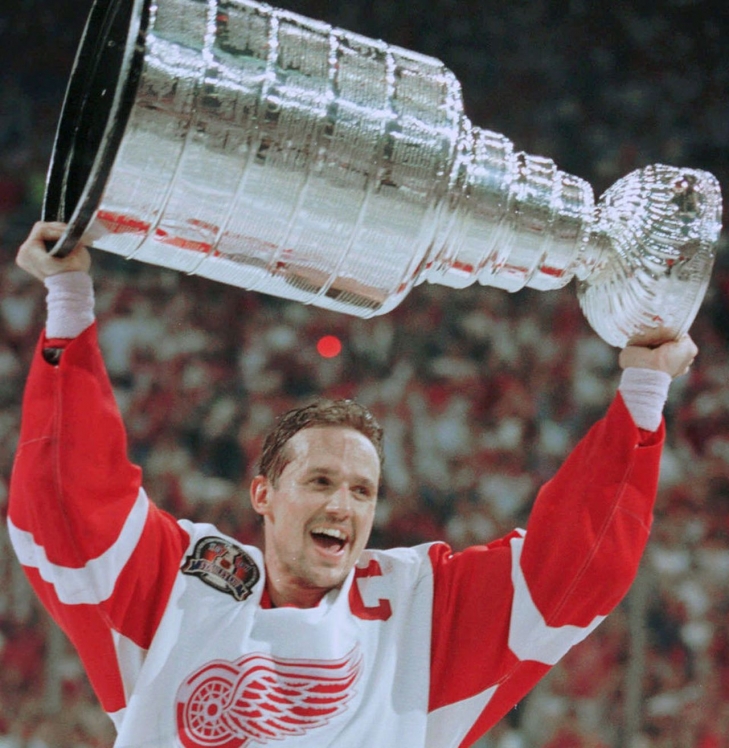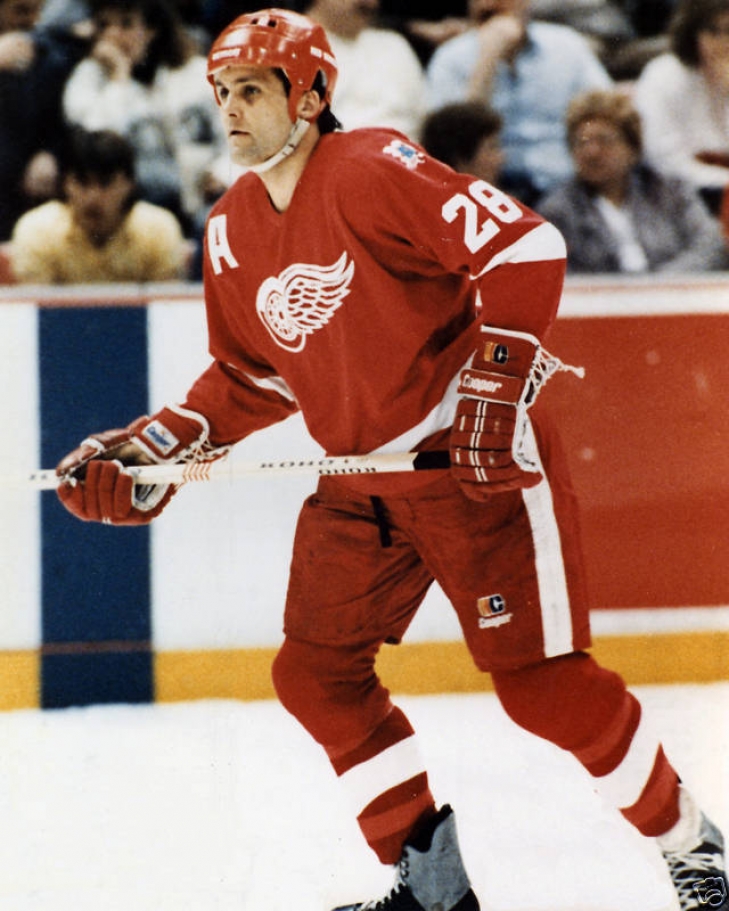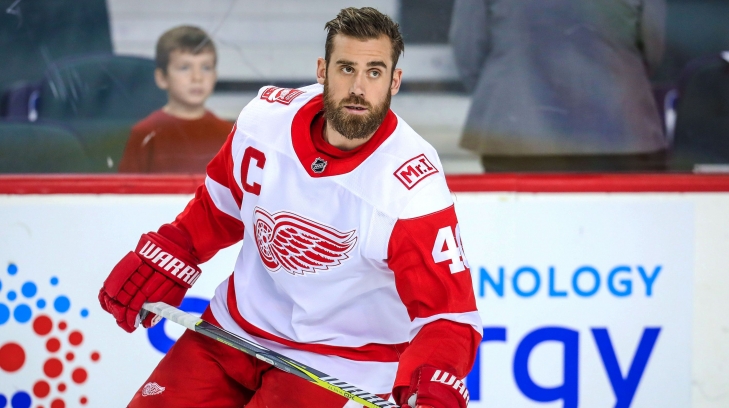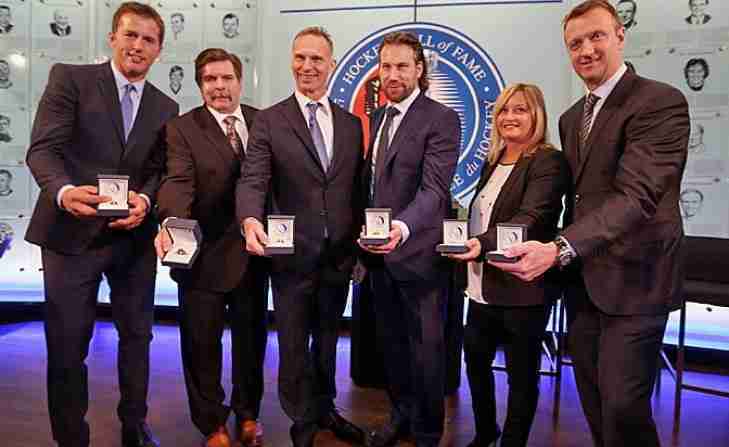35. Vyacheslav Kozlov
Vyacheslav Kozlov arrived in the NHL as an early Third Round Pick in 1990, and after bouncing back and forth between the minors and the parent club, Kozlov was ready to stay in the 1993-94 Season with a 73 Point Season.
10. Ebbie Goodfellow
We are going so far back on this one that when Ebbie Goodfellow signed with Detroit, the team was called the Cougars.
9. Sergei Fedorov
Sergei Fedorov made the CSKA Moscow team at age 16, and as Soviet players started to defect, NHL teams began drafting players from the Iron Curtain. The Red Wings were one such squad, selecting Fedorov in the Fourth Round in 1989. A year later, Fedorov defected and was in the premier league of Hockey.
8. Sid Abel
Sid Abel began his NHL career way back in 1938 with the Detroit Red Wings, a team that “Old Bootnose” would become synonymous with.
7. Alex Delvecchio
In sports, you often talk about the "glue guy," which is the character player who holds the team together. That player is not necessarily a star, but in hockey forward, Alex Delvecchio is what we have.
5. Ted Lindsay
The importance of Ted Lindsay extends far beyond what he did on the ice, but we will get there later.
21. Chris Osgood
Chris Osgood proved that he was a decent Goalie early in his career, helping the Red Wings reach the Stanley Cup Finals in 1995, but he was the backup to Mike Vernon. This changed the year after, when he led the league in Wins (39) in 1995-96, was named a Second Team All-Star, and shared the William M. Jennings Trophy with Vernon. It was bittersweet the year after, as the Red Wings ended their Stanley Cup Finals drought, but Vernon was the player in the pipes throughout the bulk of the post-season.
6. Red Kelly
The Detroit Red Wings signed red Kelly in 1947, and the Toronto Maple Leafs, who had passed on him, hung their head in shame for that decision for 13 years.
4. Terry Sawchuk
From a Ukrainian background in the tundra of Winnipeg, Terry Sawchuk is one of the greatest hockey players to come out of the province of Manitoba. The Red Wings signed the Goalie in 1947, and after a stint in the minors, he was called up to replace the injured Harry Lumley late in the 1949-50 Season. Lumley never played for Detroit again.
3. Steve Yzerman
The Detroit Red Wings were an awful team in the years leading up to the selection of Steve Yzerman Fourth Overall in 1983. We don't think it is hyperbole to state that it was "Stevie Y" who turned around the fortunes of Detroit's member of the Original Six.
18. Reed Larson
With a claim as one of the first really good American Defenseman, Reed Larson learned his craft from the legendary Herb Brooks at the University of Minnesota.
165. Reed Larson
99. John Ogrodnick
13. Henrik Zetterberg
Despite playing his entire career in an Original Six city, Henrik Zetterberg had a brilliant under the radar career. The Swedish Centre was the runner-up for the Calder Trophy in 2003 and two seasons later he would develop into one of the most well rounded players in the National Hockey League.
Hockey HOF Class of 2015 officially inducted
Representing Sweden, this year’s headliner is Swedish born Defenceman, Niklas Lidstrom, the seven time Norris Trophy winner who anchored the Detroit Red Wings to four Stanley Cups. Lidstrom is undeniably the top Defenceman of the 2000’s and also holds a Conn Smythe Trophy in his trophy case.
Lidstrom’s longtime teammate and roommate on the road, Sergei Fedorov also got in. The Russian born star won the Hart Trophy in 1994 and is a two time recipient of the Frank J. Selke as the NHL’s top Defensive Forward. He would win three Stanley Cup Wings with the Red Wings.
The American representatives are two Defenceman. Phil Housely, and eight time NHL All Star from St. Paul, Minnesota and Angela Ruggiero, a long time defender for the U.S. women’s team.
The lone Canadian player is another blueliner in Chris Pronger who won both the Norris and Hart Trophy in 2000. The native of Dryden, Ontario would also make five All Star Teams and win the Stanley Cup with the Anaheim Ducks in 2007.
Hockey Hall of Fame CEO, Bill Hay and Carolina Panthers owner, Peter Karmanos Jr, rounds out the class.
We here at Notinhalloffame.com would like to again extend our congratulations to this new class.
HHOF 2015 Class Announced!
Nicklas Lidstrom will be entering the Hockey Hall on his first try, which should be a surprise to nobody. The Swedish born Defenceman, who was ranked #1 by us on Notinhalloffame.com helmed the Red Wings to four Stanley Cup wins and earned the Norris Trophy seven times.
Our number #3 selection, Chris Pronger will also be inducted. Pronger, who has not officially retired but has not played in the NHL for three years due to post-concussion syndrome is also a former Norris Trophy winner and won the Hart Trophy in 2000. Pronger also won the Stanley Cup in 2007 as a member of the Anaheim Ducks.
Sergei Fedorov, a teammate of Lidstrom on three Stanley Cups will be enshrined in Toronto too. The flashy forward is a former Hart Trophy winner (2004) and two time Frank J. Selke winner. The Soviet born player was ranked at #4 by us.
A mild surprise is the induction of American born Defenceman, Phil Housley, who holds the record for the most points for a blueliner born in the U.S. Housley has been eligible since 2006 and was ranked #14 at Notinhalloffame.com
The remainder of this year’s class includes Bill Hay, a former President of Hockey Canada, American female player, Angela Ruggerio, and Peter Karmonos Jr., the owner of the Carolina Hurricanes
A perceived snub by many is that of Eric Lindros, whose HOF momentum has been growing in recent years.
Next month, we here at Notinhalloffame.com will unveil our new ranking for next year.
94. Flash Hollett
Like many Canadians of his era, Flash Hollett was a two-sport athlete (Lacrosse and Hockey). Thankfully for the Boston Bruins, Hollett focused on hockey was one of the first defensemen who was comfortable rushing the ice. Flash held some of the early scoring records for defensemen. Because Hollett achieved his greatest offensive output during the war depleted years of World War II, he does not receive as much respect as he likely should. Regardless, Flash Hollett was an effective player in the early years of the NHL and may still yet be considered by the Hall one day.
92. Bob Goldham
Called the “second goalie” for his penchant for throwing himself in front of the puck to stop any offensive burst, Bob Goldham was one of the premier defenders of his era. Goldham's career started a little late as he was a member of the Canadian Navy during World War II, but upon his return to the professional game, there was little doubt that he was among the best at pure defensive hockey. Goldham became best known to many for his work with the CBC during the Hockey Night in Canada broadcasts in the ’70s. Maybe it is that combination of on and off ice work that could help him reach the Hall.
68. Larry Aurie
One of the few stars left yet to be enshrined from the “old time hockey era”, Larry Aurie was a master of the penalty kill and was dubbed the “The Little Rag Man” for his entertaining puck handling while shorthanded. Famed Red Wings owner James Norris dubbed the diminutive (he was only 5 ft 6) as the heart and soul of the Red Wings. He may have been one of the smallest NHL players, but he was also one of its toughest. Had Aurie not suffered a severe leg injury in 1937, his career totals would have likely been much higher as he never did recover properly. His number #6 was retired by the Red Wings but has been inconspicuously omitted from the rafters in Detroit’s home arena. Perhaps, if he was posthumously honored in Toronto, he would properly be honored in Detroit as well.


